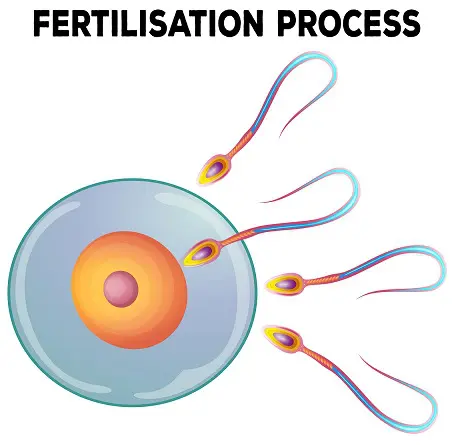Understanding the existence of any form of life has been a very fascinating topic since the beginning of time and scientists made sure that no stone is left unturned. Every living being on this planet, which is a result of sexual reproduction, marks the start of its journey on this planet when a female egg is fertilised with male sperm. Let’s find out more about this process.
General Fertilisation Overview:
Fertilisation occurs when a sperm fuses with the female act during intercourse and further forms an egg that gets implanted in uterus of the female. The sperm travels through the fallopian tube and penetrates the zona pellucida layer of the ovum (female egg) and fuses with it which forms zygote (fertilized egg). Thousand of sperms are produced in male body to compensate for the ones unfit and non- motile ones. Once the zygote is formed, it gets implanted in the uterus and further growth takes place when cells start dividing and forming tissues and tissues form organ which results in formation of an organ system, ultimately turning into an organism.
Detailed Fertilisation Overview:
There are many steps involved in the whole process of fertilisation, right from the capacitation of sperm to Zona reaction and post-fertilization events. Let’s look into it in detail:
- Sperm Capacitation – it literally translates to the preparation of sperm for fertilisation. The sperm becomes hyperactive and its motility increases. This step ensures that the sperm is in ideal condition to fertilise the egg.
- Sperm-Zona Pellucida Binding– This is the next step if the sperm finds an ovum. Sperm binds with Zona Pellucida layer of an ovum and a receptor-ligand reaction occurs. After this binding process occurs, no other sperm can enter through this layer.
- Penetration of Zona Pellucida– The shape of sperm’s head helps in cutting through the layers of ovum. It further activates growth of ovum which is arrested at one stage of meiosis which only resumes after the egg gets fertilised.
- Acrosome Reaction– The head of sperm (acrosome) contains various Zona Pellucida digesting enzymes which help it in deeper penetration into the layers of ovum. The head of sperm diminishes with deeper penetration. It is crucial for sperm to retain its acrosomal content before it fertilises the ovum.
- Cortical Reaction– Egg activation takes place at this stage as the egg is previously frozen at metaphase stage in meiotic division II. A rapid development of the ovum takes place and cortical granules fuse with Zona Pellucida along with exocytosis.
- Zona Reaction – The Zona Pellucida layer hardens and this completes the process of fertilisation.
Apollo Cradle Specialist



